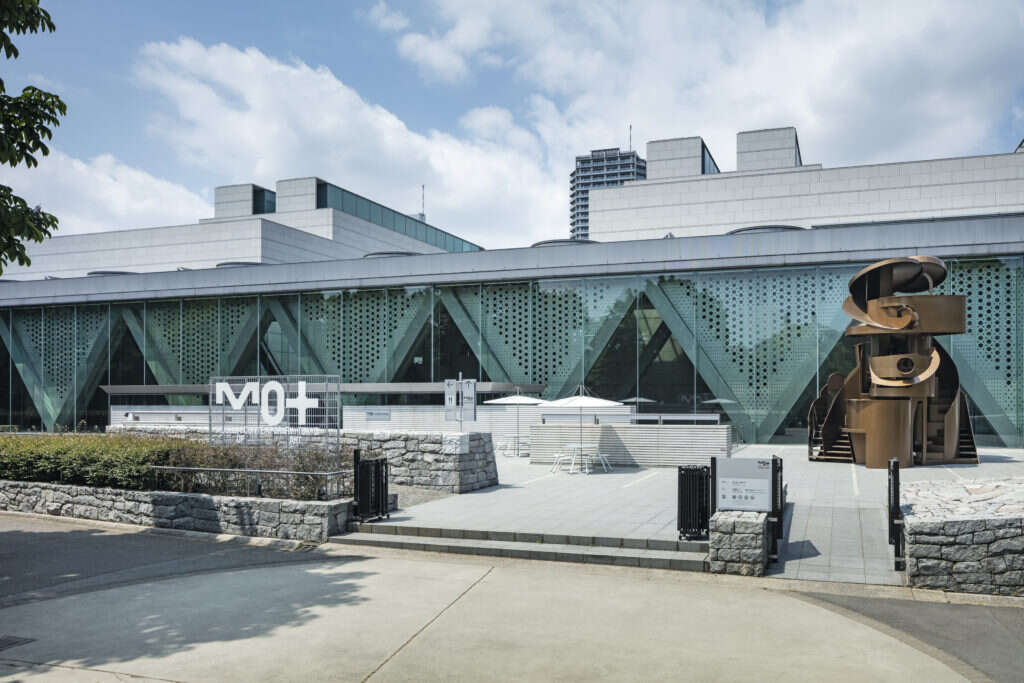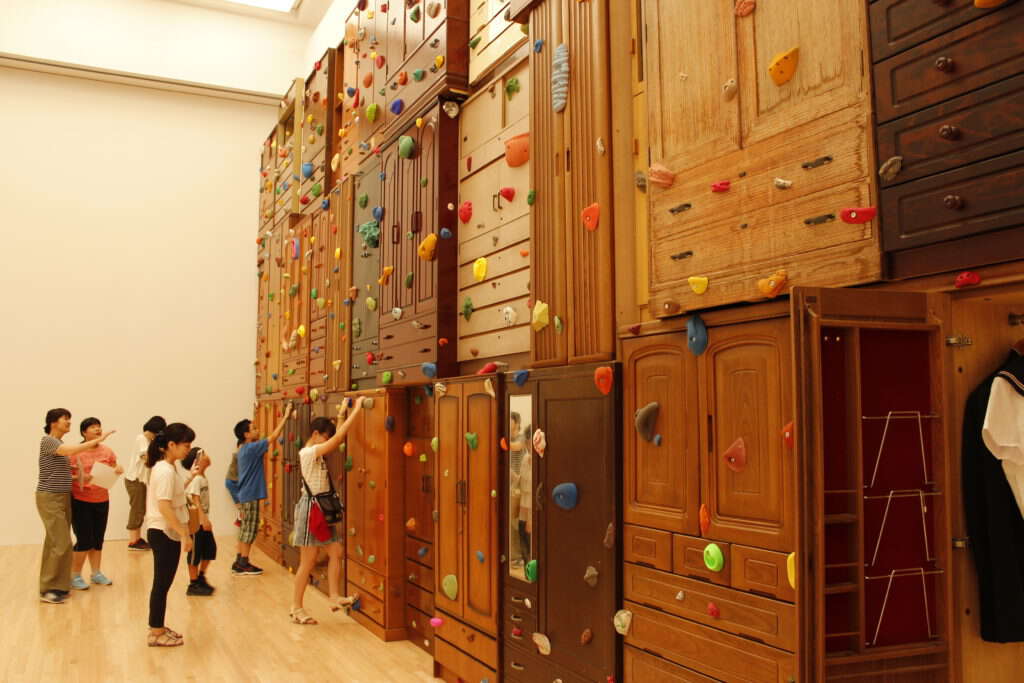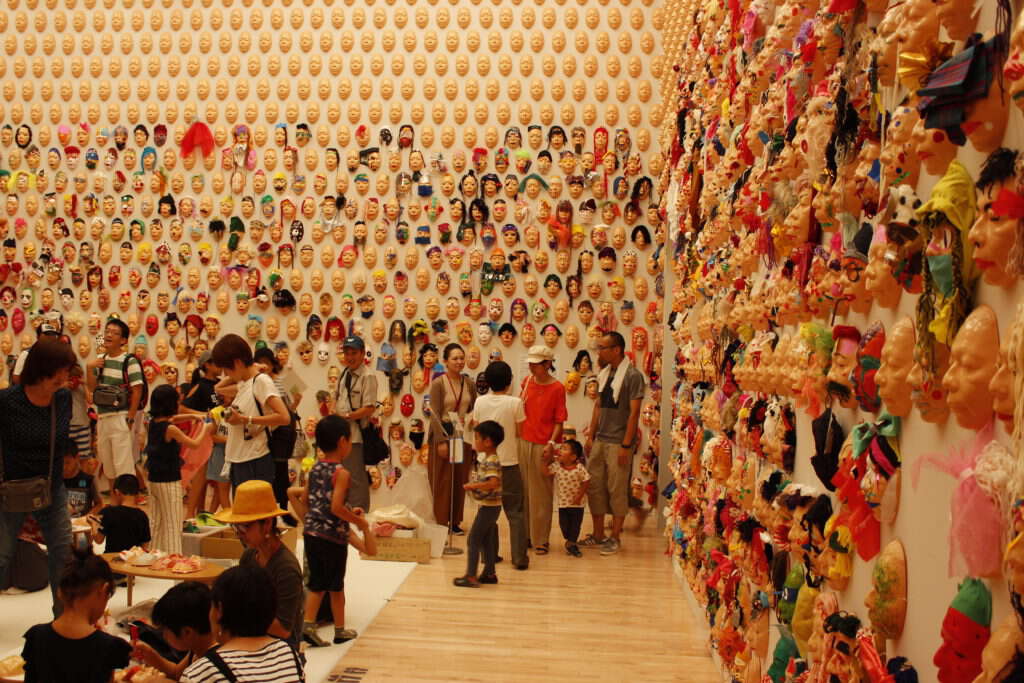"Now is the Time to Play" Museum of Contemporary Art Tokyo
 View of Museum of Contemporary Art Tokyo, ©️Museum of Contemporary Art Tokyo
View of Museum of Contemporary Art Tokyo, ©️Museum of Contemporary Art Tokyo
Right: Anthony Alfred Caro, ' The tower of discovery', 1991, Photo: Kenta Hasegawa
Courtesy of Museum of Contemporary Art Tokyo
As adults, we have been told to "stop playing games, stop playing with toys and friends," but as adults, we may be repeating the same thing. As an adult, you may find yourself repeating the same things and asking questions like these Do I want to stop hanging out with my friends, or do I want to study harder and work harder?" and so on.
Yes, life is never easy. It is true for everyone and at all times. So when can we have time to "play" properly, when can we truly enjoy playing at something? You need time for work and study, but don't underestimate the importance of playtime. This is because playtime can give you the opportunity to discover new values about yourself and the world.
So how do you feel about contemporary art? When you go to a museum or gallery, do you feel it is a time for play? If not, do you consider contemporary art to be a difficult subject that needs more study and discovery? No matter what you think about contemporary art, some people say that it is difficult.
The Museum of Contemporary Art Tokyo is holding an exhibition titled "Time to Play Now". This exhibition is designed for children as well as adults to enjoy the "play time" of contemporary art.
 Yoshiaki Kaihatsu, 'Examination Wall', Installation View, "Now it's time to Play ", 2019 ©️Museum of Contemporary Art Tokyo
Yoshiaki Kaihatsu, 'Examination Wall', Installation View, "Now it's time to Play ", 2019 ©️Museum of Contemporary Art Tokyo
Courtesy of Museum of Contemporary Art Tokyo
This exhibition will feature works by six artists and artist collectives: Yoshiaki Kaihatsu, Kazuhiro Nomura, team Hamburg, Tanotaiga, TOLTA, and Usio. Each work is a game in which visitors can participate. Upon entering the first exhibition room, one is greeted by a huge cabinet covering the entire wall. In addition to its overwhelming scale, the cabinet is also eye-catching because it is a bouldering climbing wall. Visitors may be overwhelmed by the work, but the cabinet doors lead to another exhibition room. The work seems humorous and fun, but according to the artist, Yoshiaki Kaihatsu, the "exam wall" is actually an expression of the pressure and stress of exams.

 Tanotaiga, 'Tanonymous', Installation View, "Now it's time to Play", 2019 ©️️. Museum of Contemporary Art Tokyo
Tanotaiga, 'Tanonymous', Installation View, "Now it's time to Play", 2019 ©️️. Museum of Contemporary Art Tokyo
Courtesy of Museum of Contemporary Art Tokyo
Another interesting work is Tanotaiga's 'Tanonymous', a work that covers an entire wall with countless masks. The numerous masks, based on the artist's expressionless face, are gradually transformed into a variety of faces by the audience from a participatory workshop. In the workshop, the audience freely decorates the plain masks using materials provided by the museum. Eventually, all of these diverse faces will be displayed as 'Tanonymous' artworks.
The artist Tanotaiga basically explores social systems and values in his art works, and examines the power that mass media and standardized symbols have in our daily lives. The title of the work "Tanoyimasu" is a compound word of the artist's name "Tanotaiga" and "Anonymous". Through his works, the artist critically looks at standardized society and the anonymity that pervades contemporary society. By allowing the audience to decorate the masks as they please, the audience eventually becomes the viewer and the creator at the same time. In the process of the same face in the museum gradually changing into various faces, the artist seems to want to convey his thoughts.
Playing with friends, playing with toys, any kind of play gives us time to recharge our batteries. Through exhibitions, artists express themes related to society, and exhibitions and museums also become playgrounds. In the sense that contemporary art becomes a playground, it is worth seeing (and playing with) exhibitions. The participation of the audience becomes part of the work, and in some cases, the traces of the audience's play may remain as part of the work.
The Museum of Contemporary Art Tokyo is holding the exhibition "Now is the Time to Play" until October 20, 2019th. Along with participatory artworks, there are related programs and workshops where audiences can play together with the artists. For more details and information, please visit https://www.mot-art-museum.jp/en/exhibitions/time-to-play/.
Article written by: Jeongeun Jo
Born in Korea, currently living in Japan. One of the members of TRiCERA, she graduated from the Graduate School of Fine Arts, Tokyo University of the Arts. She is also an artist herself.